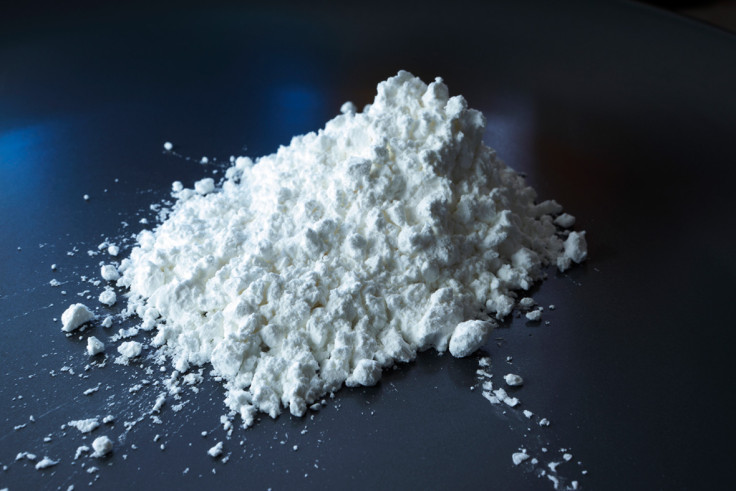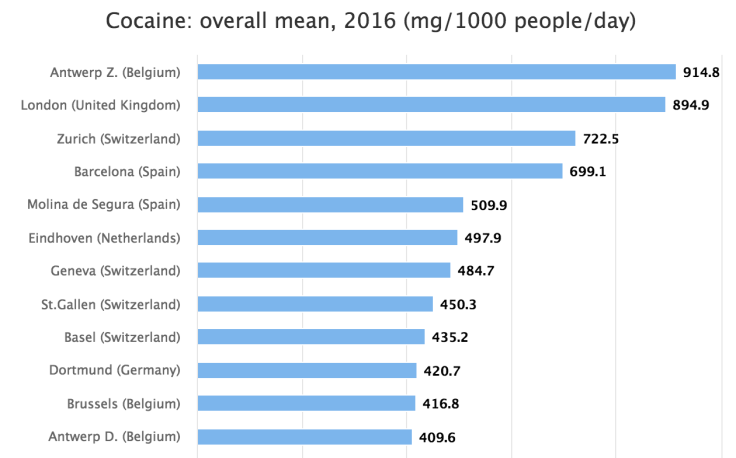London takes more cocaine during working week than any other city in Europe
Only Antwerp in Belgium surpasses British capital for overall use of the drug.

Londoners take more cocaine during the week than anywhere else in Europe, new data suggests. However, when the weekend is taken into consideration, the Belgian city of Antwerp beats the UK capital's intake of the illicit drug.
The results were disclosed by the European Monitoring Centre for Drugs and Drug Addiction (EMCDDA) on Tuesday (13 December). The body analyses cities' sewage water to determine the levels of drug use.
During the week, London consumes 790.5mg per 1,000 people per day. On the weekend, the figure rises to 999.3mg per 1,000 people per day.
However, this is topped by Antwerp, whose population consumes 1,042mg per 1,000 at weekends. Overall, Antwerp leads London by 914.8mg to 894.9mg.
Other high-consuming cocaine cities include Zurich, Barcelona, Eindhoven, Geneva and Basel. The study examined 50 cities in 18 different European countries.
A spokeswoman for the EMCDDA explained the methodology. She said: "Drug use is a complex, hidden and often highly stigmatised behaviour. This is also why measuring it is such a difficult task.
"Surveys, for example, are important tools, but as other tools, they are subject to biases. Some users are hard to reach and may not respond to surveys at all. Those that do respond might not admit the extent of their drug use. Others are unaware of the actual substances and the mix of drugs taken.
"To get a full picture of drug use, we need to use multiple indicators and dynamic monitoring tools.
"Wastewater analysis is a rapidly developing scientific discipline that has the potential to provide objective and real-time data on geographical and temporal trends in illicit drug use, at population level. Most of the chemicals that enter our body leave it unchanged or as a mixture of metabolites."
She explained that cocaine, for example, is broken down into benzoyl-ecgonine – the main metabolite of the drug.
"Benzoyl-ecgonine ultimately ends up in the sewer network," she said. "Probably geographically close to where the cocaine was used. The sewer network carries the waste to the treatment plant where samples of the untreated liquid are collected.
"The samples are then taken to a laboratory where the metabolites can be identified and their concentrations measured, taking into account other factors such as sewage flow and population size, this information can then be used to back-calculate the amount of cocaine that would have been used by the population."
The full results of the study can be found here.

© Copyright IBTimes 2025. All rights reserved.






















